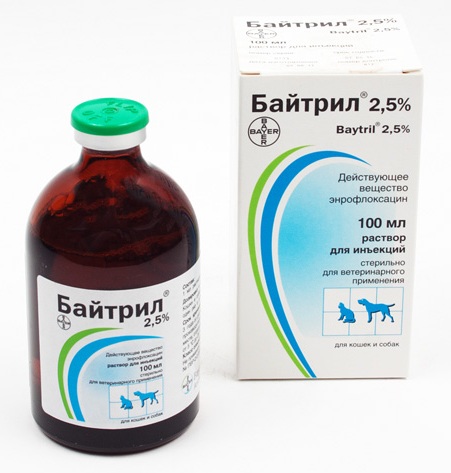Symptoms of pneumonia in scrofulous turtles depend on the stage of the disease. Common symptoms include:
- Difficulty breathing - the animal breathes through its mouth, blows bubbles, wheezing appears.
- Changes in behavior - the red-eared turtle does not eat, most of the time it remains motionless.
- The pet can not sink to the bottom of the aquarium, remaining on the surface of the water, and when swimming falls over on its side.
- Blanching of the mucous membranes.
Note. More often, freshwater turtles suffer from pneumonia, and it is rare in land animals.
The types, stages, and symptoms of the disease are described below, as well as how to treat pneumonia in the Red-eared Turtles.
Material Content:
I stage
The first stage of the disease is called wet or exudative, it develops quickly, proceeds in an acute form and, without proper treatment, can lead to the death of the animal. As a rule, the cause of this condition becomes a short hypothermia and crowded content. Symptoms appear after 3-4 days.
To the general signs of the disease, transparent discharge from the sinuses (often foamy), cough and shortness of breath are added. The animal can rub its face with its paws. And if you click the reptile on the nose, with a sharp retraction of the head under the carapace, a vibrating gurgling sound is heard.
The basis for the treatment of pneumonia in scrofulous turtles is antibiotics. Baitril 2.5% is used at a dosage of 0.2 or 0.4 ml / kg. In the first case, injections are indicated every other day, in the second daily, 7-10 days. Sometimes tetracycline, ceftazidime, oxytetracycline are prescribed. If there is no improvement 3-4 days after the start of treatment, aminoglycosides are used.

And also you need to pay attention to the temperature regime in the terrarium. The recommended indicator is 30-32 degrees (about 5-7 ° C higher than usual).
II stage
The second stage of pneumonia is called dry or purulent. It occurs due to prolonged hypothermia or sudden cooling, coupled with dehydration.
The main symptoms are added sharp and rapid weight loss, shortness of breath (exhalations are often accompanied by a prolonged squeak), yellowish-green purulent discharge in the form of flakes from the sinuses, which can lead to asphyxiation. And also the head hangs on an individual and it cannot completely pull the limbs under the carapace. Spots are displayed on the x-ray, turbidity is visible in the affected lungs.

Treatment, as in the first case, is carried out using antibiotic injections. In addition, warm baths with chamomile and rehydrating solutions are shown. The daily dose of rehydrant is 1-2% of the total body weight.
In the first and second stages of pneumonia, if adequate assistance was provided to the turtle on time, recovery occurs after 2 weeks. If the treatment was carried out incorrectly, the disease can become chronic or lead to the death of the animal.
Mycotic pneumonia (systemic mycoses)
This type of disease is associated with fungal infection of the lung tissue of the tortoise and is relatively rare. The causes of the disorder can be disorders in the immune system, improper maintenance, prolonged antibiotic treatment, and a lack of vitamins in the diet. Quite often, mycosis develops as a complication of primary pneumonia.
It is difficult to recognize the disease, it proceeds in approximately the same way as other types of pneumonia. You can suspect it in the case when antibiotic therapy was ineffective, and a particular individual is at risk in accordance with the criteria listed above.
Treatment of mycosis practically does not produce results. It is necessary to pay attention to prevention, namely, to exclude factors that can cause the disease.
Tips for the maintenance of rubella tortoise for the prevention of pneumonia
It is important to ensure the correct conditions of detention:
- The volume of the aquaterrarium is about 100 liters. The reptile should have enough water and land in the form of an island (about a quarter of the area), on which it can easily climb and dry.
- Special UV lamp. This is a necessary object for arranging a turtle’s home, without which it cannot absorb most of the vitamins and calcium, which is very important for immunity.
- Providing temperature conditions 23-28 ° C. To do this, you need a lamp, a water heater and a thermometer.
- Maintaining water purity with external filters.
- The absence of small, sharp objects and toxic components in the elements of arrangement and decor of the aquarium.
- Reptile housing should not be placed on the windowsill to avoid drafts, hypothermia and overheating. In addition, it is important that the aquaterrarium is sustainable.
- You can not let the turtle walk around the apartment for a long time without supervision because of the risk of hypothermia, as well as injuries.
- The diet should be varied and include vitamin supplements.
- The pet needs the attention of the owner and regular preventive examinations by a veterinarian.
It is important!
Pneumonia in turtles has similar symptoms to tympanum of the stomach. To clarify the diagnosis, an X-ray examination is necessary. But if the individual is small, the picture may not be informative, in which case a cytological examination of the discharge from the mouth and nose is carried out. If the analysis reveals the causative agent, then the pet has pneumonia. If there are gastric enzymes in the exudate, tympanum.
For the diagnosis and treatment of such a serious disease as pneumonia, you must immediately consult a veterinarian, best of all, a specialist in reptiles - herpetologist.Only in the conditions of a veterinary clinic there is everything necessary for an accurate diagnosis, and an experienced doctor will prescribe a treatment regimen and give recommendations on caring for the rubella tortoise at home during the illness.












